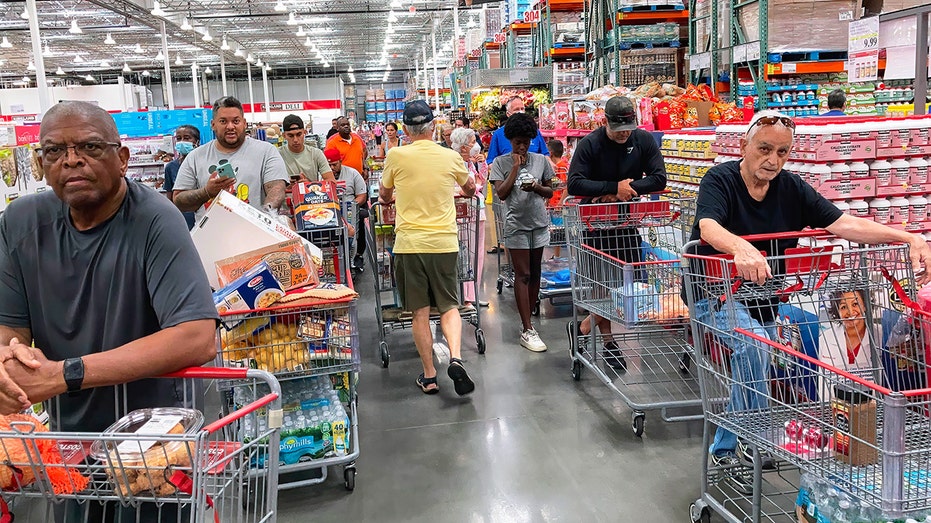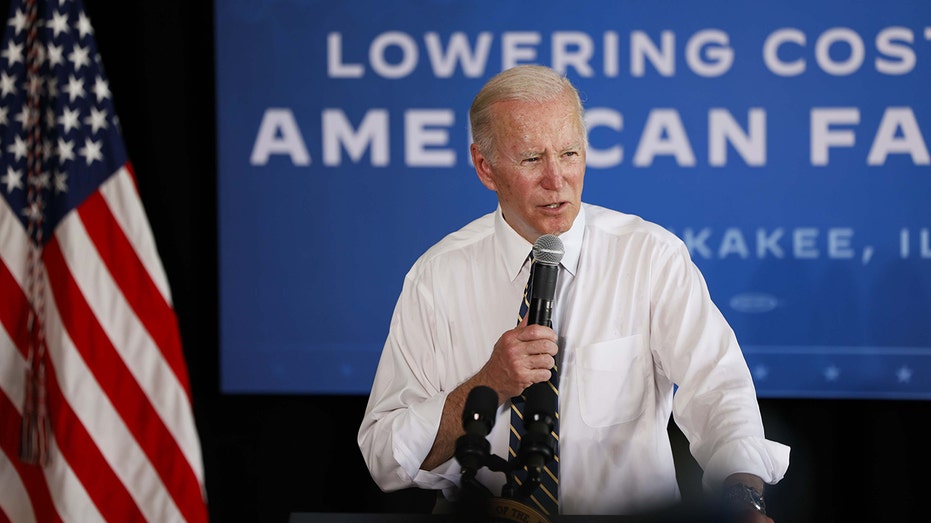Inflation hits fresh 40-year high in May with consumer prices surging 8.6%
Economists expected inflation to remain elevated in May
Federal Reserve will have to ‘force a recession’ to get inflation down: Expert
Key Advisors Group LLC co-owner Eddie Ghabour discusses the current state of the market and the Federal Reserve on ‘Varney & Co.’
Inflation remained painfully high in May, with consumer prices hitting a new four-decade high that exacerbated a financial strain for millions of Americans and worsened a political crisis for President Biden.
The Labor Department said Friday that the consumer price index, a broad measure of the price for everyday goods, including gasoline, groceries and rents, rose 8.6% in May from a year ago. Prices jumped 1% in the one-month period from April. Those figures were both higher than the 8.3% headline figure and 0.7% monthly gain forecast by Refinitiv economists.
INFLATION TIMELINE: MAPPING THE BIDEN ADMIN'S RESPONSE TO RAPID PRICE GROWTH
It marks the fastest pace of Inflation since December 1981.
So-called core prices, which exclude more volatile measurements of food and energy, climbed 6% from the previous year, also more than Refinitiv expected. Core prices also rose 0.6% on a monthly basis, suggesting that underlying inflationary pressures remain strong.
"What an ugly CPI print. Not only was it higher than expected on almost all fronts, pressures were clearly evident in the stickier parts of the market," said Seema Shah, chief strategist at Principal Global Investors. "The decline in inflation, whenever that finally happens, will be painfully slow."
Price increases were widespread: Energy prices rose 3.9% in May from the previous month, and are up 34.6% from last year. Gasoline, on average, costs 48.7% more than it did one year ago and 7.8% more than it did in April. In all, fuel prices jumped 16.9% in May on a monthly basis, pushing the one-year increase to a stunning 106.7%.
In another worrisome sign, shelter costs – which account for roughly one-third of the CPI – accelerated in May, climbing 0.6%. It marked the fastest one-month gain since 2004. On an annual basis, shelter costs have climbed 5.5%, the fastest since February 1991.
Food prices have also climbed 10.1% higher over the year and 1.2% over the month, with the largest increases in dairy and related products (up 2.9%, the biggest monthly increase since July 2007), non-alcoholic beverages (1.7%), cereals and bakery products (1.5%), and meats, poultry, fish and eggs rose (1.1%).

Shoppers wait in line at a Costco wholesale store in Orlando. (Paul Hennessy/SOPA Images/LightRocket via / Getty Images)
Scorching hot inflation has created severe financial pressures for most U.S. households, which are forced to pay more everyday necessities like food, gasoline and rent. The burden is disproportionately borne by low-income Americans, whose already-stretched paychecks are heavily impacted by price fluctuations.
Rising prices are eating away the strong wage gains that American workers have seen in recent months: Real average hourly earnings decreased 0.6% in May from the previous month, as the inflation increase eroded the 0.3% total wage gain, according to the Labor Department. On an annual basis, real earnings actually dropped 3% in May.
GET FOX BUSINESS ON THE GO BY CLICKING HERE
Rampant inflation has become a major political liability for Biden ahead of the November midterm elections, in which Democrats are expected to lose their already razor-thin majorities. Surveys show that Americans see inflation as the biggest problem facing the country – and that many households blame Biden for the price spike.
The hotter-than-expected report will also have major implications for the Federal Reserve, likely solidifying a series of aggressive rate hikes as central bank officials try to tame inflation. Policymakers already raised the benchmark interest rate by 50-basis points – double the usual size – in May and are expected to approve at least two more similarly sized hikes in June and July.

President Joe Biden speaks during a visit to a family farm in Kankakee, Illinois, on May 11, 2022. (Taylor Glascock/Bloomberg via Getty Images / Getty Images)
Close to 98% of investors now expect the Fed to carry out another half-point rate hike in September as inflation remains stubbornly high, according to the CME FedWatch tool.
Still, the Fed is in a precarious situation as it walks the line between cooling consumer demand and bringing inflation closer to its 2% target without inadvertently dragging the economy into a recession. Hiking rates tends to create higher rates on consumer and business loans, which slows the economy by forcing employers to cut back on spending.
"The Fed is now between a rock and a very hard place," said Peter Earle, a research fellow at the American Institute for Economic Research. "Acting more aggressively to stem the rise in prices heightens the likelihood of causing a recession."





















